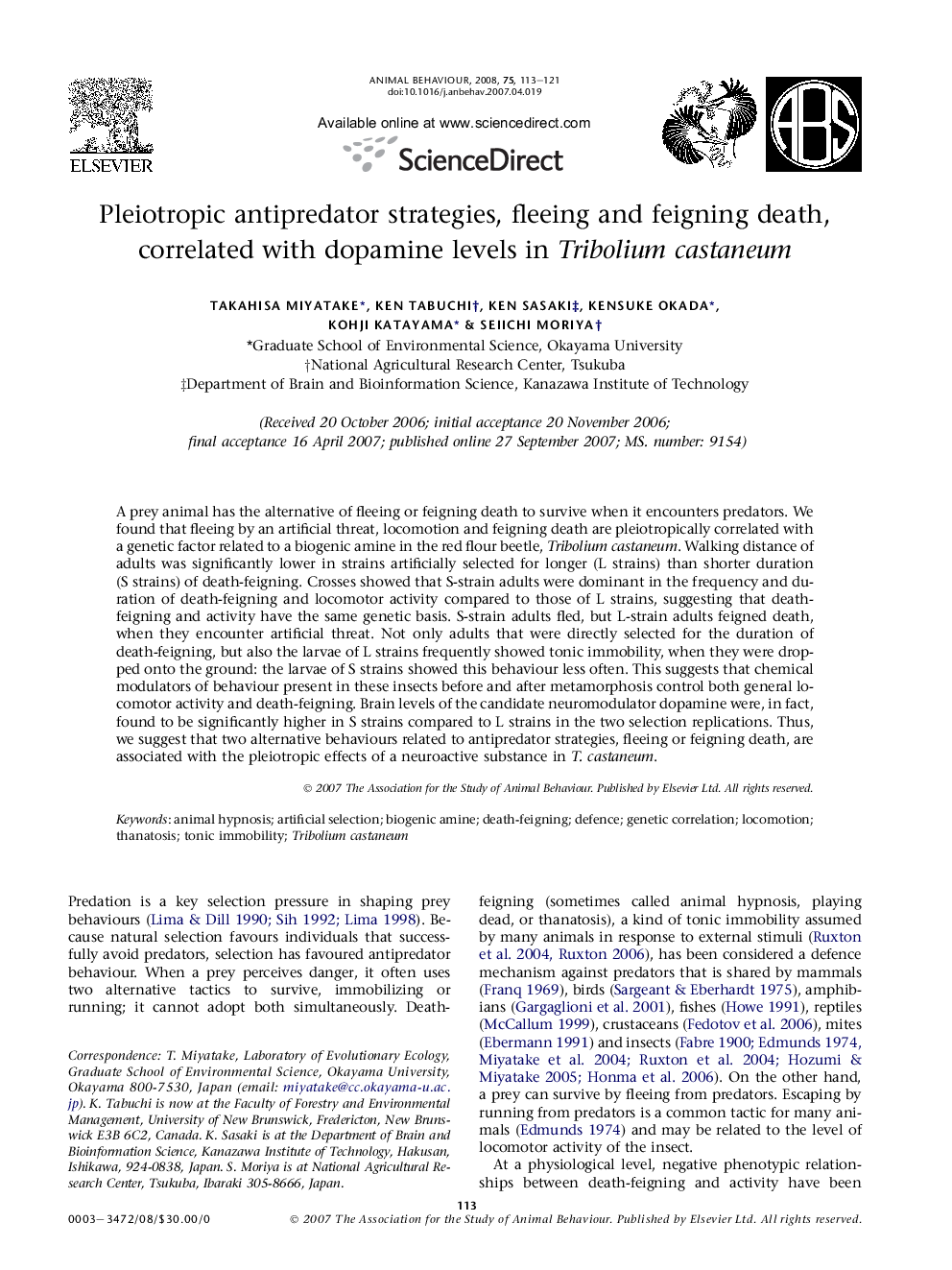| Article ID | Journal | Published Year | Pages | File Type |
|---|---|---|---|---|
| 2418960 | Animal Behaviour | 2008 | 9 Pages |
A prey animal has the alternative of fleeing or feigning death to survive when it encounters predators. We found that fleeing by an artificial threat, locomotion and feigning death are pleiotropically correlated with a genetic factor related to a biogenic amine in the red flour beetle, Tribolium castaneum. Walking distance of adults was significantly lower in strains artificially selected for longer (L strains) than shorter duration (S strains) of death-feigning. Crosses showed that S-strain adults were dominant in the frequency and duration of death-feigning and locomotor activity compared to those of L strains, suggesting that death-feigning and activity have the same genetic basis. S-strain adults fled, but L-strain adults feigned death, when they encounter artificial threat. Not only adults that were directly selected for the duration of death-feigning, but also the larvae of L strains frequently showed tonic immobility, when they were dropped onto the ground: the larvae of S strains showed this behaviour less often. This suggests that chemical modulators of behaviour present in these insects before and after metamorphosis control both general locomotor activity and death-feigning. Brain levels of the candidate neuromodulator dopamine were, in fact, found to be significantly higher in S strains compared to L strains in the two selection replications. Thus, we suggest that two alternative behaviours related to antipredator strategies, fleeing or feigning death, are associated with the pleiotropic effects of a neuroactive substance in T. castaneum.
